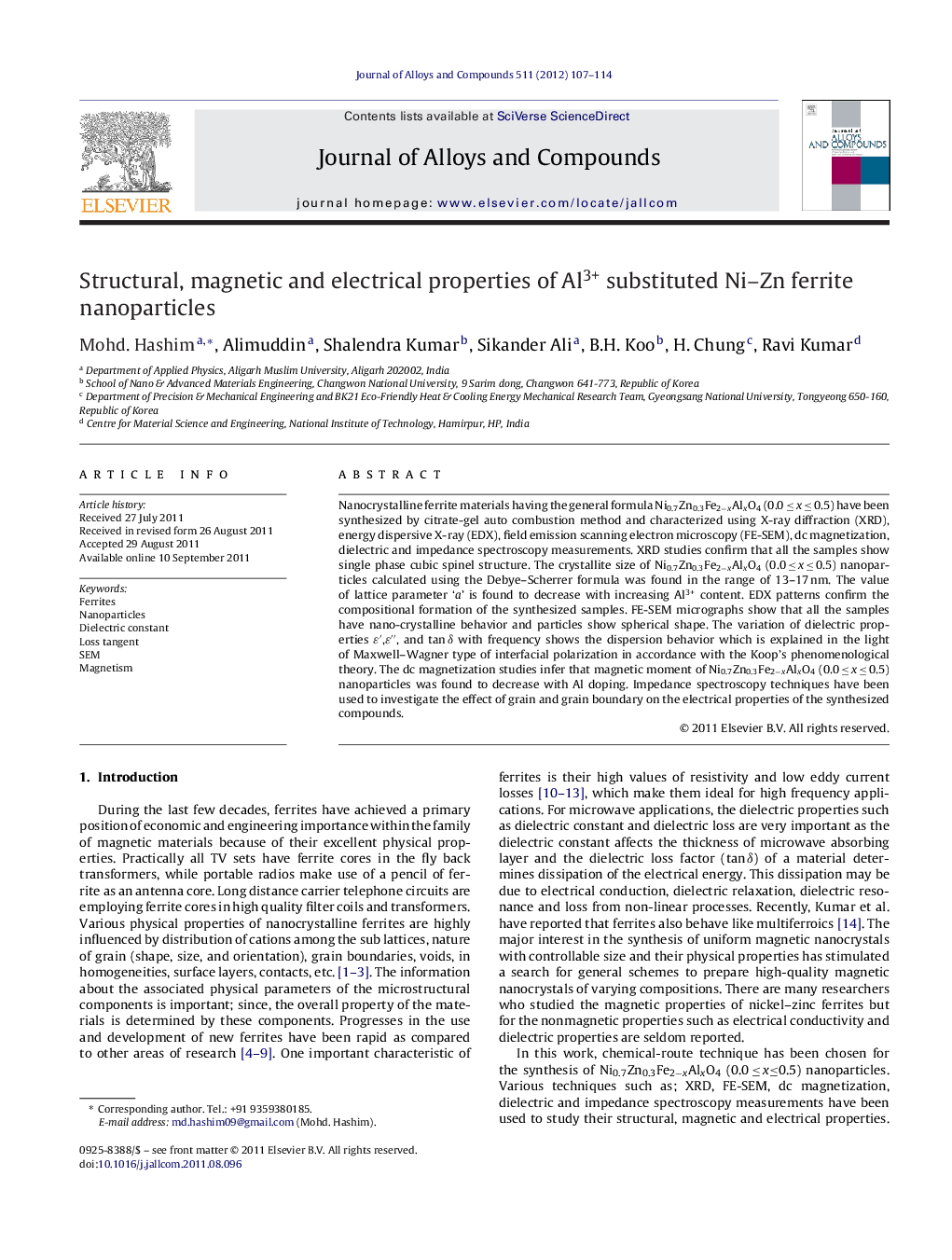| Article ID | Journal | Published Year | Pages | File Type |
|---|---|---|---|---|
| 1616618 | Journal of Alloys and Compounds | 2012 | 8 Pages |
Nanocrystalline ferrite materials having the general formula Ni0.7Zn0.3Fe2−xAlxO4 (0.0 ≤ x ≤ 0.5) have been synthesized by citrate-gel auto combustion method and characterized using X-ray diffraction (XRD), energy dispersive X-ray (EDX), field emission scanning electron microscopy (FE-SEM), dc magnetization, dielectric and impedance spectroscopy measurements. XRD studies confirm that all the samples show single phase cubic spinel structure. The crystallite size of Ni0.7Zn0.3Fe2−xAlxO4 (0.0 ≤ x ≤ 0.5) nanoparticles calculated using the Debye–Scherrer formula was found in the range of 13–17 nm. The value of lattice parameter ‘a’ is found to decrease with increasing Al3+ content. EDX patterns confirm the compositional formation of the synthesized samples. FE-SEM micrographs show that all the samples have nano-crystalline behavior and particles show spherical shape. The variation of dielectric properties ɛ′,ɛ″, and tan δ with frequency shows the dispersion behavior which is explained in the light of Maxwell–Wagner type of interfacial polarization in accordance with the Koop's phenomenological theory. The dc magnetization studies infer that magnetic moment of Ni0.7Zn0.3Fe2−xAlxO4 (0.0 ≤ x ≤ 0.5) nanoparticles was found to decrease with Al doping. Impedance spectroscopy techniques have been used to investigate the effect of grain and grain boundary on the electrical properties of the synthesized compounds.
► We have successfully synthesized Ni0.07Zn0.03Fe2−xAlxO4 ferrite nanoparticles using chemical method. ► XRD study infers that all samples have single phase nature and lattice parameters decreases with Al doping. ► FE-SEM micrographs show that all the samples have nanocrystalline behavior and particles show spherical shape. ► The real and imaginary part of the dielectric was found to decrease with frequency and explained in the light of electron hopping mechanism and space charge polarization discussed by Maxwell–Wagner model and Koop's phenomenological theory. ► The complex impedance measurements show two semicircles for all the samples, which shows that the resistive and the capacitive properties of the samples are associated with the grain and grain boundaries. ► Magnetic properties such as: saturation magnetization, remnant magnetization and coercive field decreases with increase in Al doping which may be due to the dilution of the sub-lattice by nonmagnetic ions doping.
